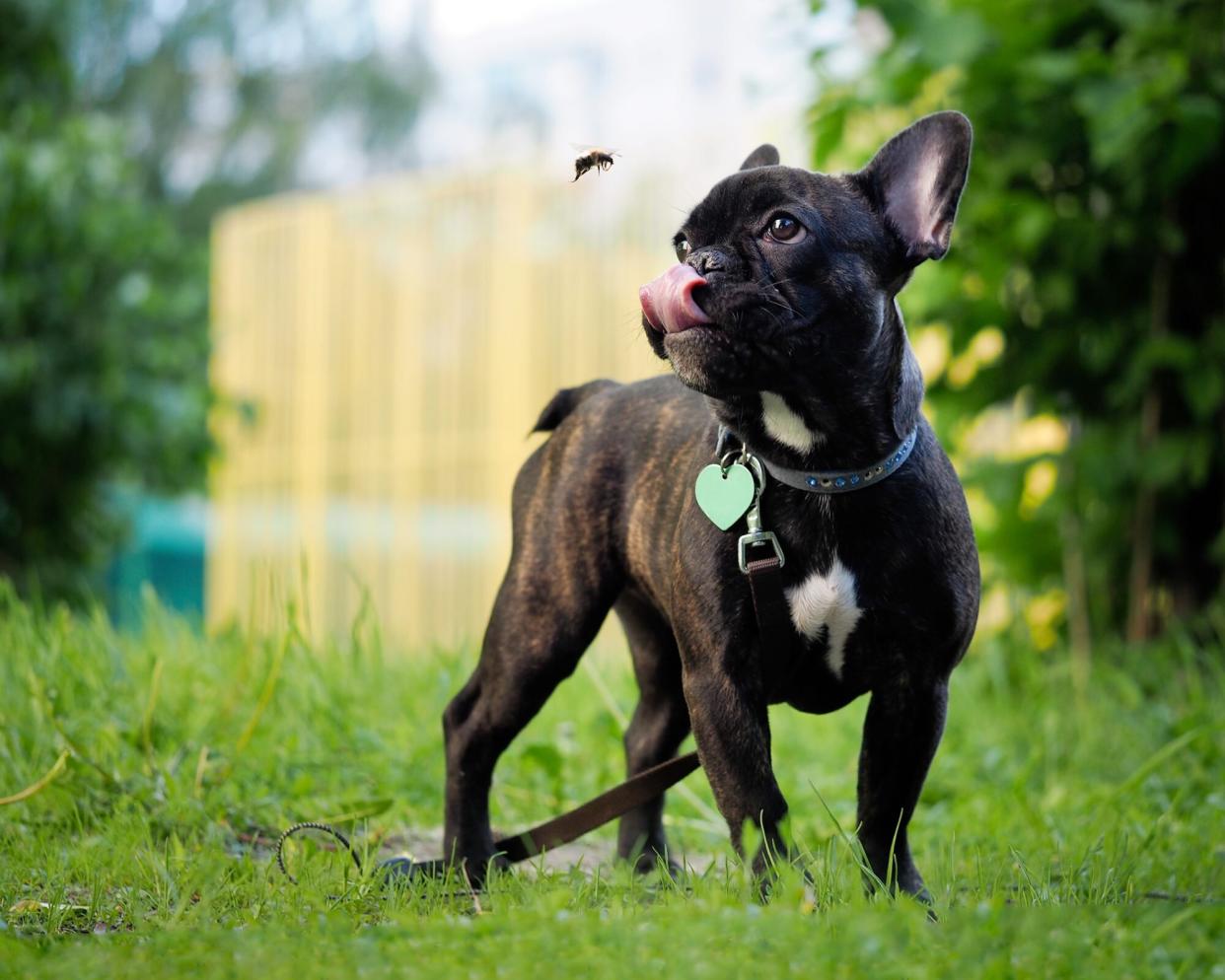How to Help Your Dog Heal from Bee Stings & Insect Bites

kozorog / Getty
We've all seen, and probably chuckled at, the photos: Regretful pups sitting with inflamed snouts after investigating a bee a little too closely.
But the effects of bee stings and other pests—wasps, fire ants, mosquitos, fleas, and ticks—can be serious. Just like us, a dog stung by a bee will be in some pain.
Dogs who take an interest in bees or wasps are likely to receive a painful sting on the nose or head area. Sometimes dogs will even try to eat bees! Fire ants will march onto your dog without hesitation and then sting in unison. Ouch! And mosquitoes, ticks, and fleas can spread disease and cause itchiness for your best friend.
Dog Bee Sting Symptoms
While hopefully you are always supervising your dog when they're playing outside, if you didn't happen to see a bee sting your dog, there are a few signs to look out for according to VCA Hospitals including:
Swelling
Hives
Licking the spot where the sting occurred
Whining
Drooling
Pawing at the mouth
Limping
Seizures in extreme cases
What to Do After Your Dog Is Stung by a Bee or Bitten by an Insect
Reactions to insect bites and bee stings can range from slight swelling and pain to anaphylaxis, a sudden, severe allergic reaction that can be fatal if not treated immediately. Mosquito bites can transmit heartworm disease. Tick-borne diseases include Lyme disease and ehrlichiosis (a bacterial illness with flulike symptoms). Fleas can pass on tapeworms.
If a bee stings your dog, brush the stinger out of his skin using the edge of your fingernail, a credit card, or a butter knife. Don't grasp the stinger with tweezers; doing so may release more venom into the wound.
Some stings are life-threatening. While it might look funny, a dog stung by a bee in the mouth, face, or neck can cause dangerous swelling that affects a dog's ability to breathe. That's an emergency, and your dog needs immediate veterinary help.
If a bee stings your dog is below the neck such as on their paw or torso, treat the painful area with a soothing paste made of baking soda and water or moisten a washcloth or gauze pad with cold water and apply it to the injury. Lynn Buzhardt, DVM, writes that a soothing oatmeal bath might be necessary to treat multiple bites or stings.
Dogs may also need the dreaded head cone if they keep scratching or licking their wounds, Buzhardt writes. That behavior can delay healing and even lead to new infections.
How to Treat a Bee Sting on a Dog
An antihistamine such as Benadryl for a dog bee sting can help, depending on the severity of the reaction. Ask your vet now what the appropriate dose would be for your dog and write it down so you don't have to guess if and when the time comes.
Keep a close eye on your dog after the sting to make sure he doesn't have an allergic reaction, Hill's Pet Nutrition says. If the swelling doesn't dissipate, call your vet.
If fire ants overrun your dog, get him away from where they're attacking, put on gloves, and carefully brush them off so you don't make them angrier. If there are only a few bites, you can treat them with a baking soda paste, a cold compress, or Benadryl. If there are many, you need to get your dog to the vet for treatment.
Buzhardt says pet owners should head to the vet or emergency clinic if:
Severe swelling occurs around the head and neck
Hives appear on your dog's body
Your dog has trouble breathing or wheezes
The pup drools excessively
The dog gets agitated or anxious
Vomiting or diarrhea happens
Your dog gets dizzy or disoriented
Seizure occurs
Plan ahead for encounters with fleas, ticks, and mosquitoes with vet-prescribed or recommended preventatives. The one you choose should depend on your lifestyle as well as the types of parasites in your area.
Preventing Future Bee Stings and Bug Bites
The best way to prevent your dog from getting stung by bees or bitten by bugs is to keep a watchful eye on them outside and keep your home and yard sprayed for pests.
If you know there is a bee hive, wasp nest, or ant hill near your house or in your landscaping, keep your dog away from those areas and talk to a professional pest control service for advice on how to relocate the hive (bees are so important to our ecosystem!) or reduce the risks of you or your dog getting bitten by other insects.
A version of this article first appeared in Happy Paws Spring/Summer 2020.

